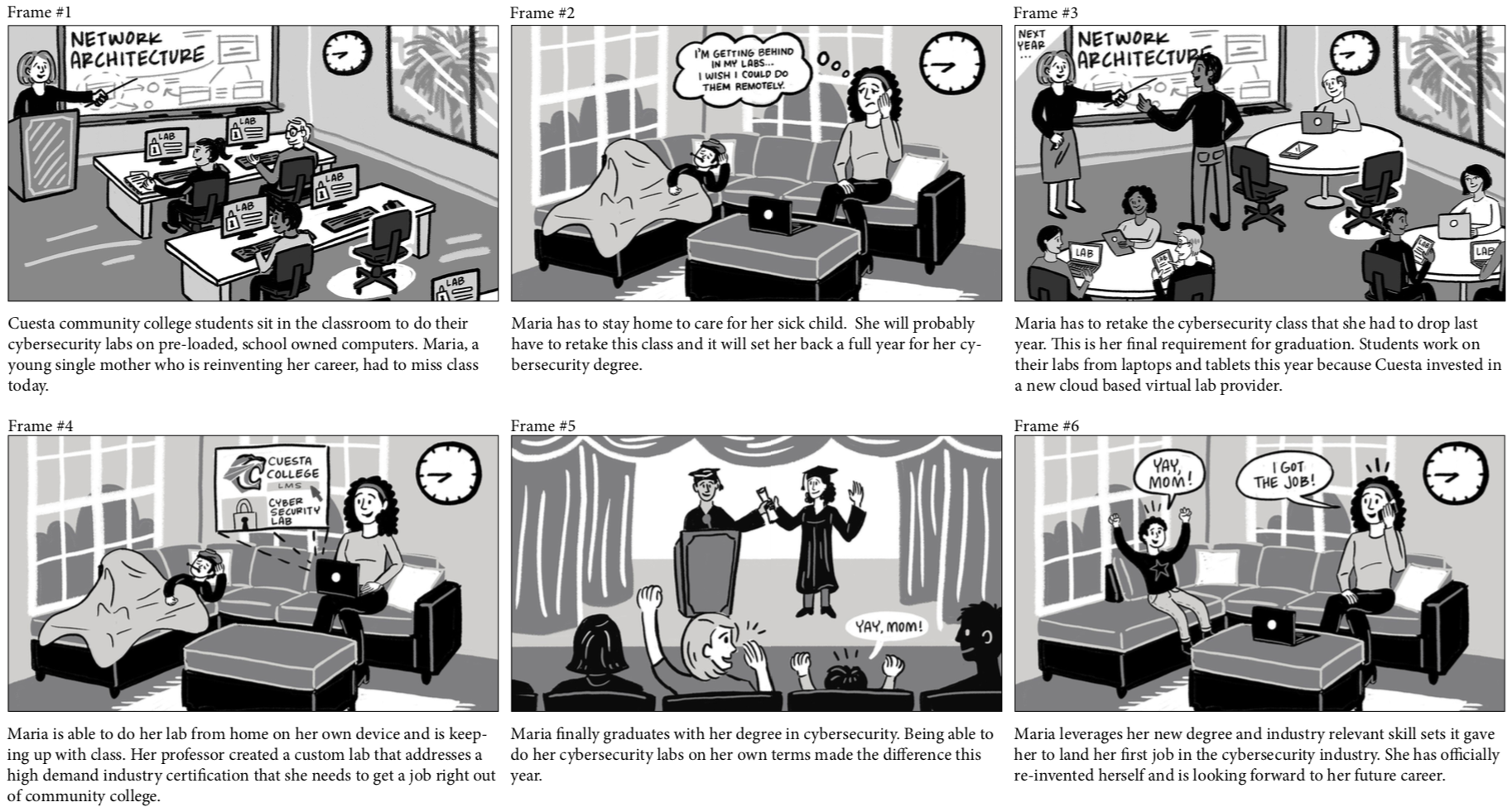Scoping Virtual Laboratory Environments for Community College Technology Courses
Overview
Problem
Innovation in Action
During the Innovation Workshop facilitated by the Cal Poly DxHub, the team, which included a SCCRC executive, a consultant, three SCCRC IT team members, and three faculty members, went through Amazon’s Working Backwards process. During this process they identified their primary customers to be students and faculty, whose principal needs were identified as having flexible access to technology labs, ensuring students were workforce ready, and reducing the cost of lab technology (Figure 1 and Figure 2). The team honed the ideas further in a Press Release/Frequently Asked Questions (PR/FAQ) document (Appendix 1). In addition, a storyboard was created to describe the customer experience and how it solves a problem for the student (Appendix 2).

Results
Following the Innovation Workshop, a market evaluation exercise was performed by the SCCRC which indicated that current comprehensive solutions provided varying levels of capability to serve virtual labs to students with the following key functions:
- the time, place, and device of their choosing
- instant scalability, reliability, and performance consistency at a regional or statewide level
- ability for educational institutions to effectively share/pool licensing between one another (an important factor in affordability)
- capability to easily and affordably create, customize, and share/pool curriculum or content between educational institutions
- ability to integrate existing Learning Management Systems (LMS) into the solution
- ability to simulate an on-demand, full virtual network with interchangeable virtualized devices (e.g. routers, switches, internet of things (IoT) devices).
Although no solution comprehensively met all desired functionality, with available time and resource constraints, the SCCRC decided to move their ideas into action by using the PR/FAQ as a vendor selection baseline. One of six existing solutions was selected to pilot rather than considering the development of a new solution.
Value Proposition
Supporting Documents
Amazon’s Working Backwards process results in several artifacts that help inform and guide the end result. Below is a description of each and their purpose in the process
| Press Release & Frequently Asked Questions | During the Innovation Workshop, a fictional Press Release and nonfictional Frequently Asked Questions are drafted. This is a tool that is used to define the solution and why it matters to the customer. |
| Narrative | A document that describes an overview of the process and solution. |
| Storyboard | A series of frames designed to illustrate the problem and the impact of the solution visually. |
| Virtual Lab Article | A more detailed article on the overall aspects of this engagement. |
| Virtual Labs Regional Project | Brief project description and budget. |
| Virtual Labs ROI | Return on investment analysis. |
About the DxHub
The Cal Poly Digital Transformation Hub (DxHub) is a strategic relationship with Amazon Web Services (AWS) and is the world’s first cloud innovation center supported by AWS on a University campus. The primary goal of the DxHub is to provide real-world problem-solving experiences to students by immersing them in the application of proven innovation methods in combination with the latest technologies to solve important challenges in the public sector. The challenges being addressed cover a wide variety of topics including homelessness, evidence-based policing, digital literacy, virtual cybersecurity laboratories and many others. The DxHub leverages the deep subject matter expertise of government, education and non-profit organizations to clearly understand the customers affected by public sector challenges and develops solutions that meet the customer needs.
